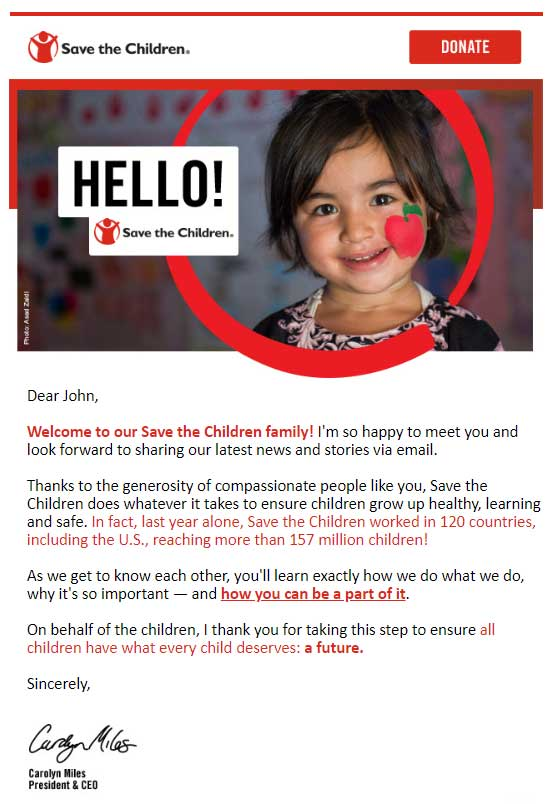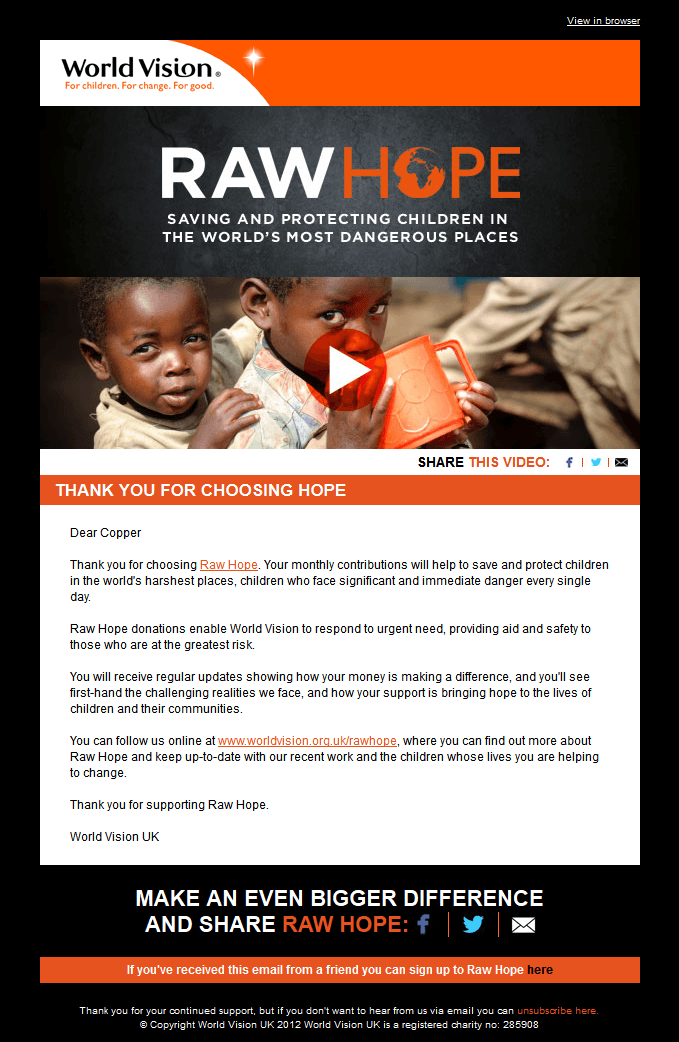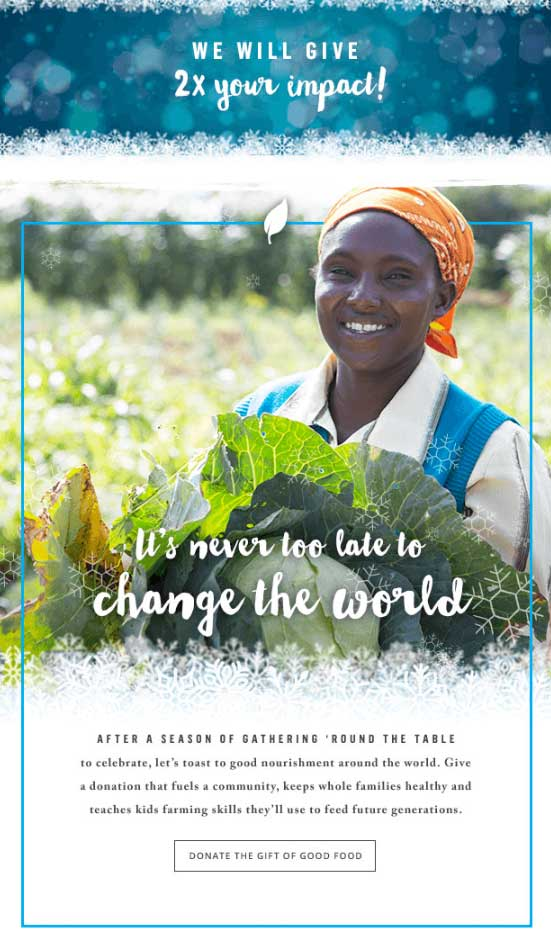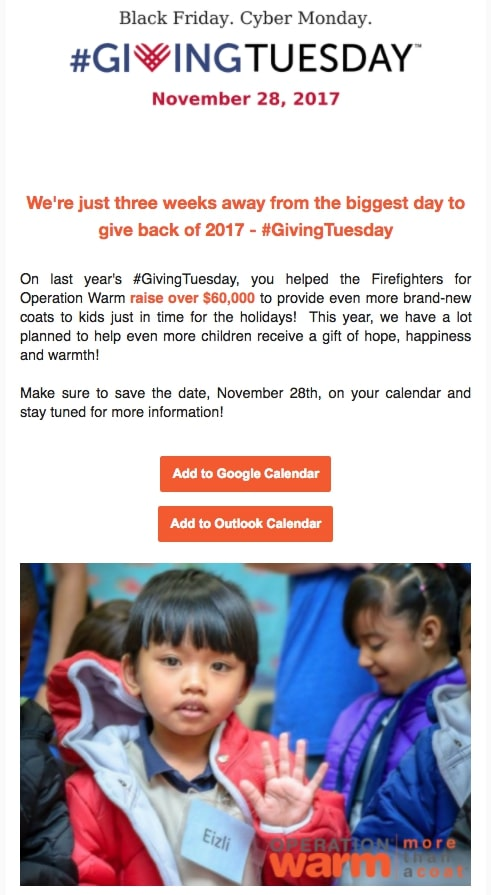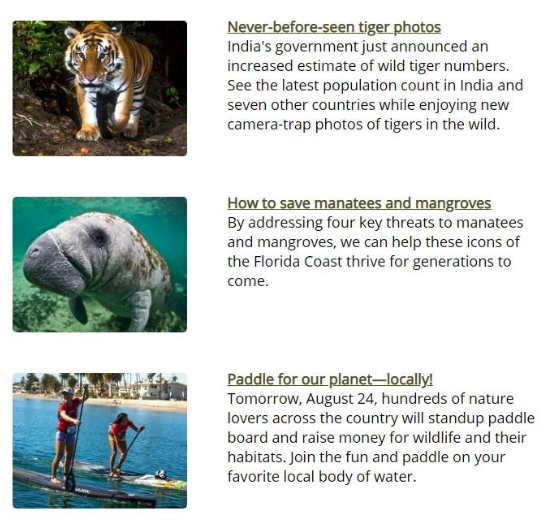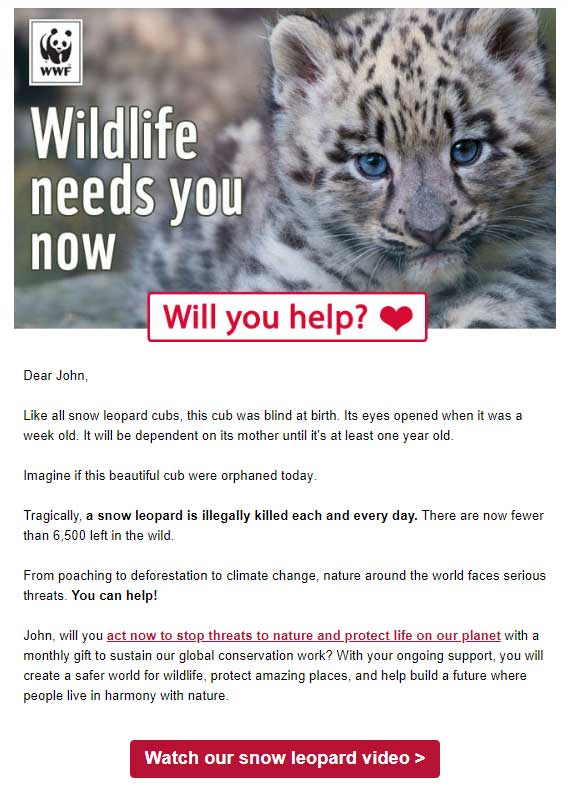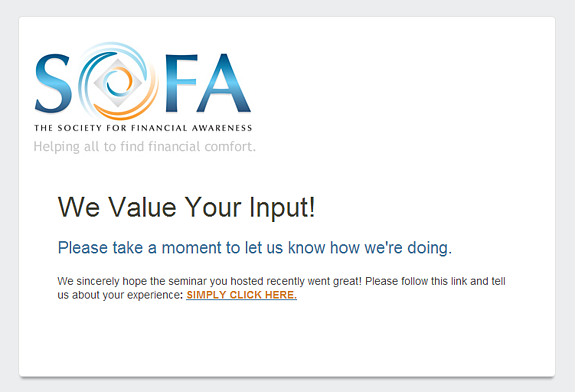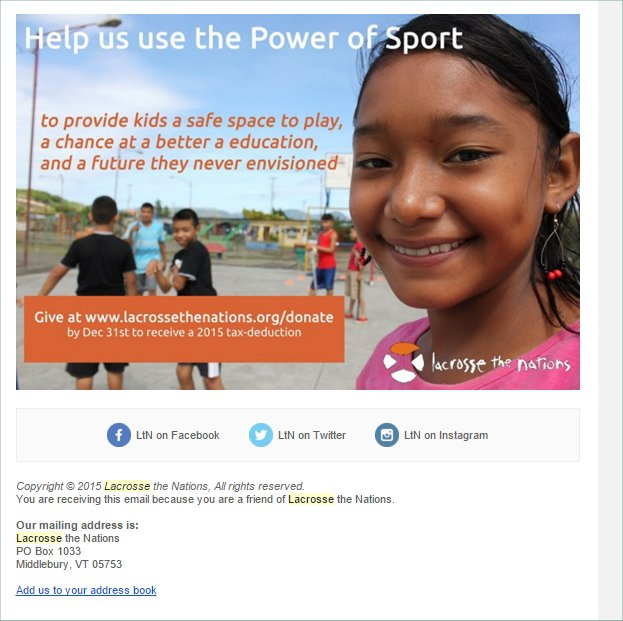Email marketing has become a powerful tool for nonprofit organizations, especially in the last few years as the pandemic put a halt on many traditional outreach and fundraising tactics. While it might seem like an outdated channel compared to social media, email boasts over 4.25 billion users worldwide — 96% of whom check their inboxes every day. When put in this context, it’s easy to see why nonprofit professionals are leveraging email marketing to drive engagement and donations.
The problem is that every business and organization sees this opportunity, and it’s all too easy for your message to get lost in a sea of promotions. To not only stay afloat but truly inspire your supporters, you need a well-crafted email campaign that captures their attention and leaves an impression on prospective donors.
Let’s dive into how your team can make the most of your email list and deliver the right messages at the right times. Plus, we’ll walk you through a few examples to get you started on your next campaign!
Mastering Email Marketing for Your Nonprofit
Whether your goals are centered around fundraising or based on donor retention, an effective email marketing campaign can provide a high return on investment with relatively short timelines and little resource investments.
This positive impact can be further heightened by embracing multi-channel marketing automation for nonprofits. By automating communications across different platforms, such as social media, direct mail, and mobile messaging, nonprofits can construct higher personalized and efficient engagement strategies, expanding their reach and maximizing their resources.
Plus, nonprofit organizations have an average email open rate of 25%, compared to just 21% for all other industries.
But even with the numbers on your side, that still means three-quarters of your audience aren’t reading your messages. So how do you get from inboxes to eyeballs and create a nonprofit email marketing success story? It starts by following these 3 best practices:
- Create a list of email addresses: The first step is to develop a mailing list of supporters that are passionate about your mission. Create a sign-up form on your website, engage with prospects at events and start producing content that’s relevant to your target audience. This will help you garner more attention and beef up your list with each new email subscriber.
- Avoid the spam filter: While people need to manually sort through direct mail, emails must pass through the dreaded spam filter. To avoid becoming one of the 45% of messages that get trapped at this stage, make sure you only deliver to willing subscribers. You’ll also want to spend time crafting an accurate and enticing header and subject line to encourage recipients to read on.
- Personalize your message: Readers are exponentially more likely to open your message if it’s relevant to them. For instance, something as simple as using email marketing software to insert the person’s name in your greeting can produce great results. You can also use these tools to track donor interests and provide curated content that boosts engagement.
Once you’ve developed the strategy behind your email marketing campaign, it’s time to dig into the specifics. How will your campaign align with organizational goals? What will your emails look like? How will you drive your readers toward a call to action? Answering all of these questions is crucial to achieving a successful email campaign, no matter how you measure it.
10 Nonprofit Email Examples
Compelling emails don’t just communicate with an audience. They educate and engage your supporters, sharing insightful content and organizational news while expressing gratitude for their continued support. Whether you’re welcoming a new subscriber, distributing a nonprofit newsletter or guiding readers toward an online donation page, the messaging in your email list is key.
But take it from me, writing can be time-consuming and difficult, especially when you start from a blank page. While I find this challenge exciting, I know not everyone feels the same. That’s why I’ve put together a list of 10 nonprofit email examples to help you skip the brainstorming step and push your imagination in the right direction.
1. The Welcome Email
The welcome email introduces a new subscriber or donor to your nonprofit organization, setting the tone for future communications. While you might assume that email readers already know your organization and its cause(s), this isn’t always the case.
You’ll want to outline the basics, like:
- What your organization does.
- The mission and values it stands for.
- Significant achievements made recently.
- How it spends donation money.
- How supporters can get more involved.
This welcome email from Save the Children is a great example, concisely covering all the pertinent details new readers will want to know:
2. Thank a Donor or New Subscriber
Thank-you emails are an excellent way to nurture a new or existing relationship with your supporters. Whether they responded to a donation request or volunteered their time to help, extending your sincere gratitude isn’t just best practice, it’s the right thing to do. Including a simple “thank you” in your welcome email is a good idea, but you should send a separate thank-you message any time someone donates or offers assistance.
For inspiration, check out this email example from Raw Hope:
Raw Hope doesn’t just extend gratitude, they tell you what the organization does, where donor money goes and provides more ways to stay connected online and through social media.
3. Season’s Greetings and Receivings
Connecting with your audience over the holidays can be a great way to relate on a personal level and engage donors during what’s been dubbed the “giving season.” However, with people feeling happier and more generous this time of year, the competition increases.
To create an effective seasonal email for nonprofit fundraising initiatives, you’ll need to devise a strategy. As a rule of thumb, it’s best to send holiday emails the week after Thanksgiving through the second week of December. This way, your email won’t be sitting in an inbox while your audience travels and gathers with family. You can also keep the holiday general to avoid alienating different demographics.
This seasonal email from WE is a great example, encouraging readers to donate regardless of religious affiliation:
4. Promote Giving Tuesday
While not an official holiday, Giving Tuesday has become a popular movement that aims to boost generosity and donations on the Tuesday after Thanksgiving. Still, it’s important to not come off as too pushy. Your email should be short and to the point, providing information on what Giving Tuesday is and how readers can donate. As always, it’s best to share your progress on milestones and any goals you have for this year.
In this email from Operation Warm, the organization highlights last year’s Giving Tuesday achievements and outlines clear next steps for the audience:
5. Keep Your Readers Updated
The tried and true nonprofit newsletter is the perfect format for keeping your readers up-to-date on the latest happenings in your organization. In addition to celebrating milestones and sharing progress on organizational projects, you should also include newsworthy stories that drive further engagement.
This example from the World Wildlife Fund (WWF) highlights a few news stories and even an upcoming event to help boost community involvement:
6. Inspire With a Success Story
As social awareness grows, many donors become jaded by opaque charities that receive donations but don’t release results. Storytelling emails break down the barriers between your audience and the tangible impacts their contributions create. By engaging with your readers’ emotions through a compelling success story, you can inspire them to lend a helping hand through donations or volunteering. To maximize this impact, try telling a personal narrative, demonstrating how your organization has helped a community or even a single person.
For instance, Water for Cambodia and Clear Cambodia tell the story of Srey Krem in this email, showcasing how their BioSand filters made a positive impact on her life:
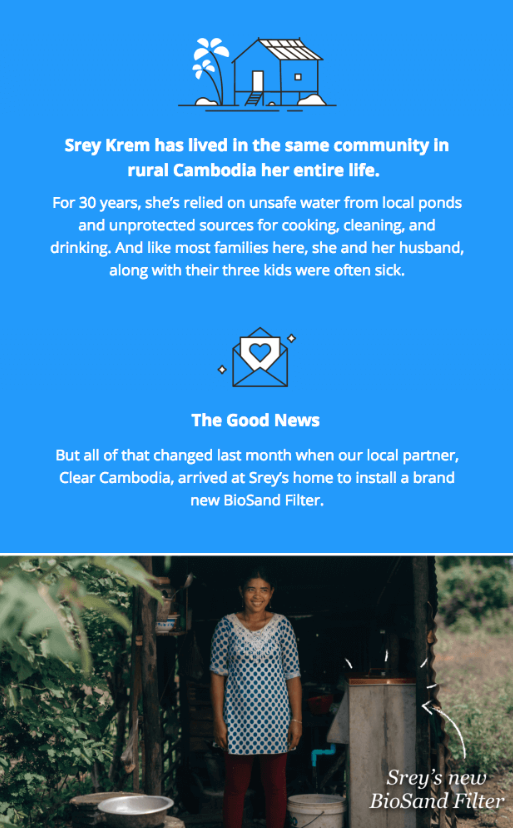
7. Enhance Stories With Eye-Catching Statistics
As my high school Statistics teacher often reminded me, storytelling and stats go hand in hand. Using real data to support your story is crucial, but be sure to make your statistics stand out on the page. Save the Children and Operation Warm offer excellent examples, showcasing impressive outreach and donation numbers front and center.
WWF also provides a great example in this email:
While the top banner doesn’t contain any numbers, it immediately creates a connection between you and the snow leopard. As we skim the email, the bolded text highlights the dire statistics that drive readers to donate.
8. Feedback, Questionnaires and Surveys
Feedback and survey emails are an easy way to collect data from your audience, either through a simple response or by guiding readers to an online form on your website. If you’re including questions in the email copy itself, be sure to keep it concise with highly intentional and targeted questions. While the same general rule applies to external surveys and questionnaires, these methods give you more room to ask detailed questions.
The Society for Financial Awareness (SOFA) keeps it simple and to the point in this example, creating awareness for the survey and providing clear directions to complete it:
9. Drive Donations With a Fundraising Email
Also known as donation appeals, fundraising emails are designed to persuade potential donors into taking action. While providing details on the goals you’ve met and those you’re working toward can be an effective way to drum up support, you don’t have to write an essay for your message to be effective. Sometimes, all you need is a clear outline of the change your organization aims to make and the ways your readers can support your cause. And it never hurts to showcase how donors can benefit, either through donation matches, raffles or even tax deductions.
Lacrosse the Nations provides a great example of a simple, yet impactful, donation campaign email:
10. Recruit More Volunteers
Outside of online donation drives and engagement metrics, your nonprofit organization needs real people to succeed. Recruiting emails can be a great way to spread awareness and gain new volunteers for an upcoming project or initiative. Tap into your mailing list and pull from your existing supporters. Your volunteer recruiting emails should end with a powerful call to action, inspiring readers to stand up and make a change.
Patagonia, which recently divested all profits to nonprofit organizations, produced a prime example of this type of email, directing readers to connect with organizations fighting climate change:
How Does Your Email Marketing Strategy Measure Up?
Above all, your audience will be looking for authenticity and transparency when it comes to nonprofit emails. Provide your readers with updates on projects and present meaningful results whenever possible. Use storytelling and powerful statistics in your email newsletter to educate and inspire. And when you come to the call to action, ensure that you’ve properly set up why people should donate or volunteer.
Feel free to use these email examples in your next campaign, or mix and match the strategies of each to inform your tactics.


